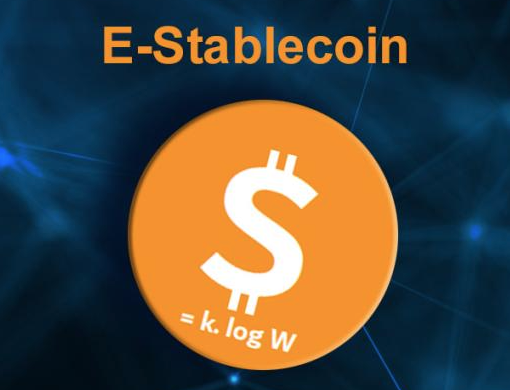There is a new breed of stablecoins in town: e-stablecoins. The stablecoins are pegged to electricity which makes them strangely unique. The tokens are underpinned by an asset that is not highly volatile, a characteristic that is conspicuously lacking in the crypto world.
As the world becomes largely digitized, cryptos are gaining popularity. Bitcoin, the most popular cryptocurrency, was developed and launched in 2009. Since then, many other cryptos have been developed in the thousands.
Most of these cryptos are volatile, meaning their prices vary majorly within short periods. Hence, they are unsuitable for many purposes, such as a store of value or a means of payment. That is where the stablecoins come in.
Stablecoins are cryptos that are pegged to a stable asset like the US dollar or gold. It means that their prices are less volatile than other digital assets. Different stablecoins exist backed by commodities, fiat currencies, and the most recent one being electricity.
Related:How to Buy and Sell Gold-Backed Cryptocurrency
In that context, e-stablecoins are pegged to the price of electricity. They are ideally designed to provide the stability of a traditional currency with the extra advantages of being sustainable and environmentally friendly.
The E-Stablecoin Concept
E-stablecoins are described as digital assets that strive to stabilize prices by pegging them to electricity prices. Theoretically, that would develop a stable crypto network since e-stablecoin prices are less volatile than normal cryptos. There are several ways that e-stablecoins can be pegged to the prices of electricity, and each of these methods has its benefits and shortcomings.
The first strategy is to use an oracle to track electricity prices. This oracle would offer data on electricity in different markets, and the e-stablecoin would get pegged to that data. The method is simple and does not need any special network. It is primarily reliant on the oracle being reliable and accurate.
Another method is to use a smart contract to track electricity prices. The smart contract would be mainly programmed to track the price of electricity in different markets and adjust the supply of e-stablecoins effectively. This method is highly complex compared to an oracle but is also more resilient to manipulation and errors.
There is no definite answer as to which method is better. Every method has its benefits and shortcomings. The oracle-based e-stablecoins may be simpler to develop and manage, but they mainly depend on the oracle being reliable and accurate. In the meantime, smart contract-based e-stablecoins are highly complex.
It is critical to note that none of these methods is perfect. Oracle-based e-stablecoins are vulnerable to manipulation in case the oracle is not reliable. Smart contract-based e-stablecoins might be subject to errors in case the smart contract is not programmed perfectly. Eventually, the developers of every e-stablecoin have to determine what strategy best suits their project.
The key benefit of e-stablecoins is that they are stable compared to other types of cryptos. This is due to electricity prices are not as volatile as those of the other commodities. Notably, e-stablecoins can also be used to hedge against inflation.
The main drawback of e-stablecoins is that they are not majorly accepted so far. Some businesses might not accept e-stablecoins as payment. Moreover, e-stablecoins are not as liquid as other forms of cryptos.
Why Are E-stablecoins Gaining Traction?
E-stablecoins are a new category of cryptos that strive to offer stability by pegging their value to electricity. The name “e-stablecoins” comes mainly from the fact that these coins are mainly backed by electrons, which are components that make up the electricity.
The e-stablecoins idea came about since traditional fiat currencies were prone to inflation, and recent years have seen a continuous increase in the price of electricity. E-stablecoins aim to offer a stable type of currency by connecting their value to electricity.
There are two main types of e-stablecoins: the ones pegged to US dollars and others pegged to electricity prices.
Related:Tether to Launch Gold-Backed Stablecoin: What to Expect
E-stablecoins pegged to the US dollar strive to maintain a stable value by tethering their supply to the amount of electricity generated in the United States. The developers insist that this method will create a stable currency since the supply of e-stablecoins will surge whenever electricity demand increases, and decrease when demand drops.
Furthermore, e-stablecoins pegged to electricity prices strive to maintain a stable value by pegging their cumulative supply to the amount of electricity consumed in the entire world. The developers insist that this method will create a stable currency since the supply of e-stablecoins will surge whenever electricity demand increases, and decrease when demand drops.
In that context, e-stablecoins can revolutionize the way value is used and stored. By pegging their entire value to electricity, they provide a stable alternative to traditional fiat currencies. They may help facilitate the transition to a low-carbon economy by offering a financial incentive for investing in renewable energy.
Components Of E-stablecoins
E-stablecoins are distinct since they provide all the benefits of traditional stablecoins, including price stability and low volatility, while also being sustainable and eco-friendly. Moreover, e-stablecoins can help in powering smart contracts and decentralized applications (dApps) on the Ethereum blockchain.
Some of the major components of e-stablecoins include:
- Low volatility – E-stablecoin prices are pegged to electricity prices, which are quite stable compared to commodities and fiat currencies. In that context, e-stablecoins are less volatile compared to traditional stablecoins.
- Transparent and auditable – the supply of e-stablecoins is auditable and transparent on the Ethereum blockchain. This enables users to track the cumulative supply of e-stablecoins and guarantees that there is no centralized authority controlling token supply.
- Price stability – E-stablecoins are backed primarily by reserve of electricity held in a smart contract powered by the Ethereum blockchain to guarantee price stability. The electricity reserve comes in handy to stabilize the e-stablecoins prices when there are major swings in the market.
- Can be used to power dApps and smart contracts. E-stablecoins can power smart contracts and dApps on the Ethereum blockchain. This is possible since e-stablecoins are ERC20 compliant, meaning that they can be used with any Ethereum-based smart contract or dApp.
- Eco-friendly and sustainable – electricity is generated in abundance and it is a renewable resource made from different sources including wind, solar, and hydropower. By tethering their electricity value, e-stablecoins are sustainable and eco-friendly.
E-stablecoins Uses
These stablecoins are pegged to electricity prices and are well-designed to stabilize by being backed by real assets. Thus, they are different from other fiat-collateralized or crypto-collateralized stablecoins. E-stablecoins have multiple benefits compared to other stablecoins, enabling you to use them in various cases:
- Paying for electricity – you can use e-stablecoins to pay for electricity, goods, and electricity-related services, like electric car charging stations.
- Storing value – E-stablecoins can be used for storing value since they are pegged to the price of electricity. Hence, they maintain their value over time. Moreover, e-stablecoins can be traded on exchanges making them a convenient method of storing value.
- Unit of account
- Hedging – the coins can hedge against price volatility.
- E-stablecoins and decentralized applications – E-stablecoins can be used in dApps in different ways including purchasing goods and services, paying transaction fees, and storing value. They may also be used to develop new decentralized applications. For instance, an e-stablecoin can be used to tokenize electric car charging stations.
- Investments – since E-stablecoins are tethered to the price of electricity, they maintain their value over time. They can be readily traded on exchanges.
- Medium of exchange
What Comes Next?
The future of E-stablecoins is hidden in great potential. Soon, more countries might create their sovereign digital currencies based on blockchain and peg them to commodities like electricity. This would enable the nations to stabilize their economies and significantly protect themselves against inflation. Additionally, it would also enable them to shift away from traditional fiat currencies. Sweden and Saudi Arabia are currently working on their national digital currencies.
Related:Elastic Supply Tokens, Are They The Future Of Stablecoins in 2021?
For now, the future of e-stablecoins appears promising. With the right implementation, e-stablecoins may become a major force in crypto. Here are some possible applications and use cases for e-stablecoins:
- Data storage and processing – E-stablecoins may be used to pay for data processing and storage services.
- Banking and financial services – they may be used to facilitate international payments, money transfers, and settlements. They may also be used as a reserve currency collateral for financial products including loans.
- Micro-lending – e-stablecoins could help in offering small loans to people and businesses in developing nations.
- E-commerce and retail – you can use stablecoins to buy goods and services online. Furthermore, they may also be used as rewards and loyalty currency.
- Social media tipping – E-stablecoins may be used to tip content developers on social media platforms like Twitter, YouTube, and Instagram.
- Government services – the coins can be used to pay fees, taxes, and other government charges. They can also be used to disburse government benefits.
- Prediction markets – E-stablecoins can trade contracts that pay out according to the results of future events.
- Public infrastructure – the coins can be used to fund and operate public infrastructure projects, including bridges, roads, and tunnels.
- Gambling and gaming
- Charity and humanitarian aid
The takeaway
E-stablecoins are a category of crypto pegged to the price of electricity. They are stable and can be used to buy goods and services or pay for electricity. For now, they are not widely accepted but are becoming popular as businesses start to accept them as payments.











